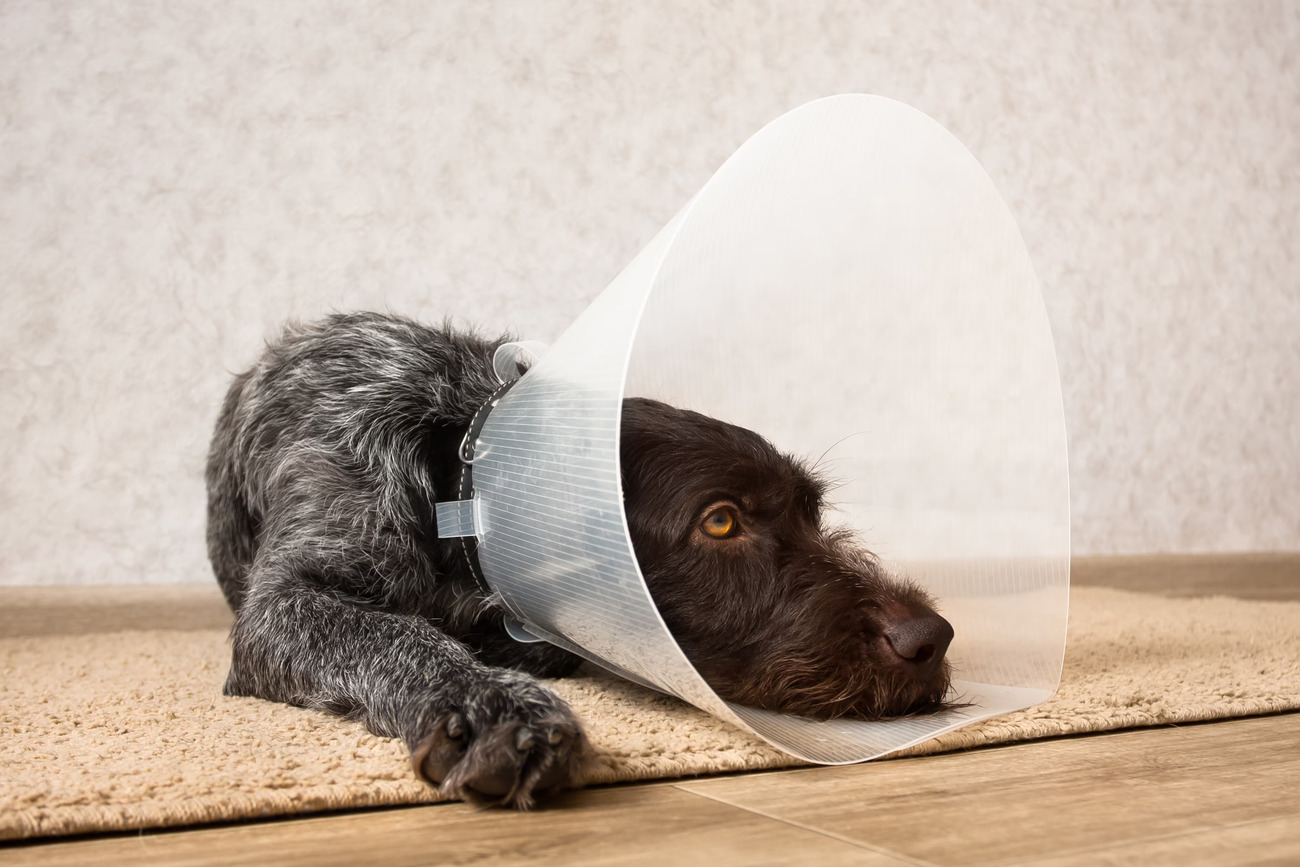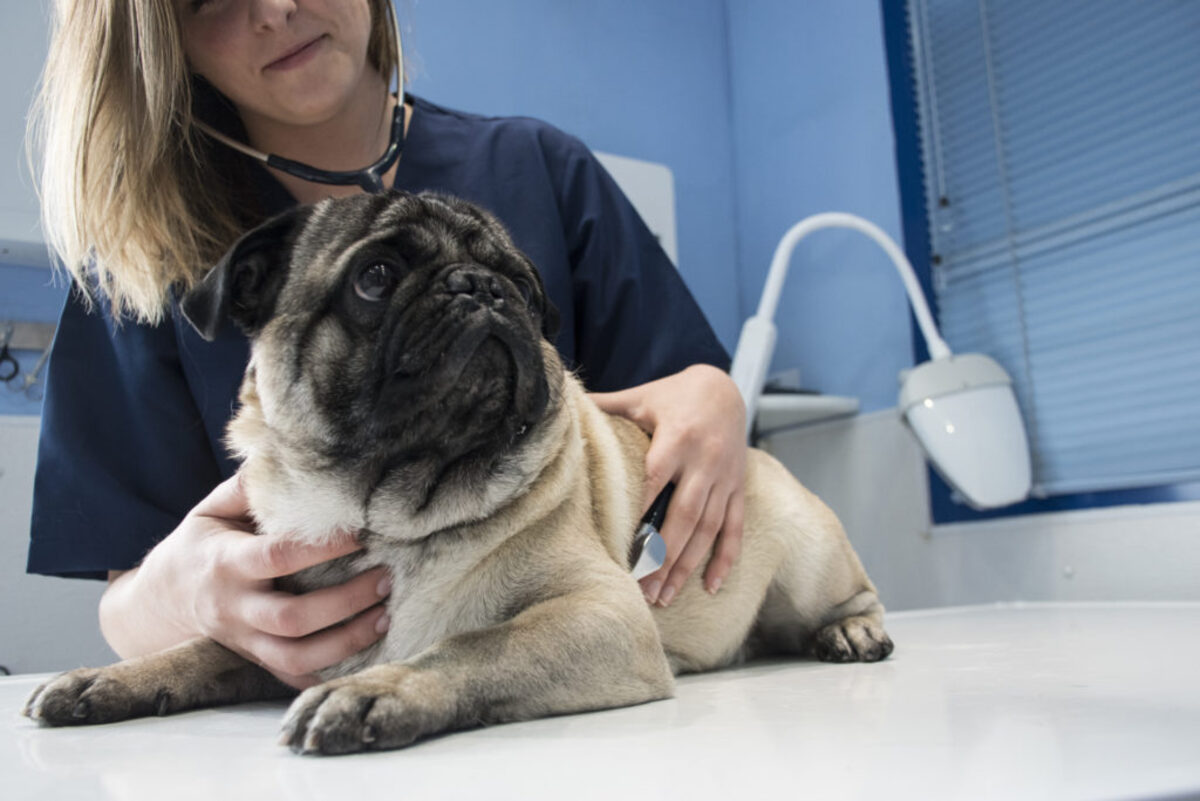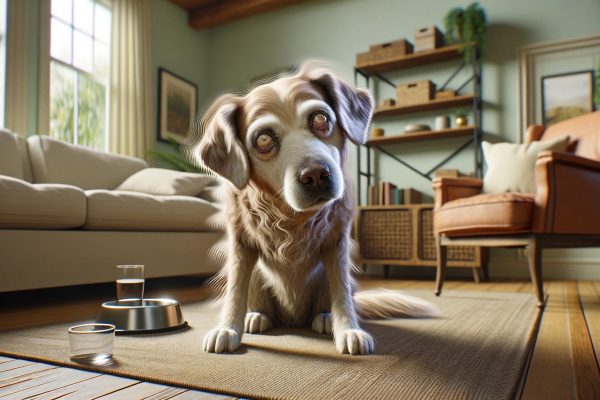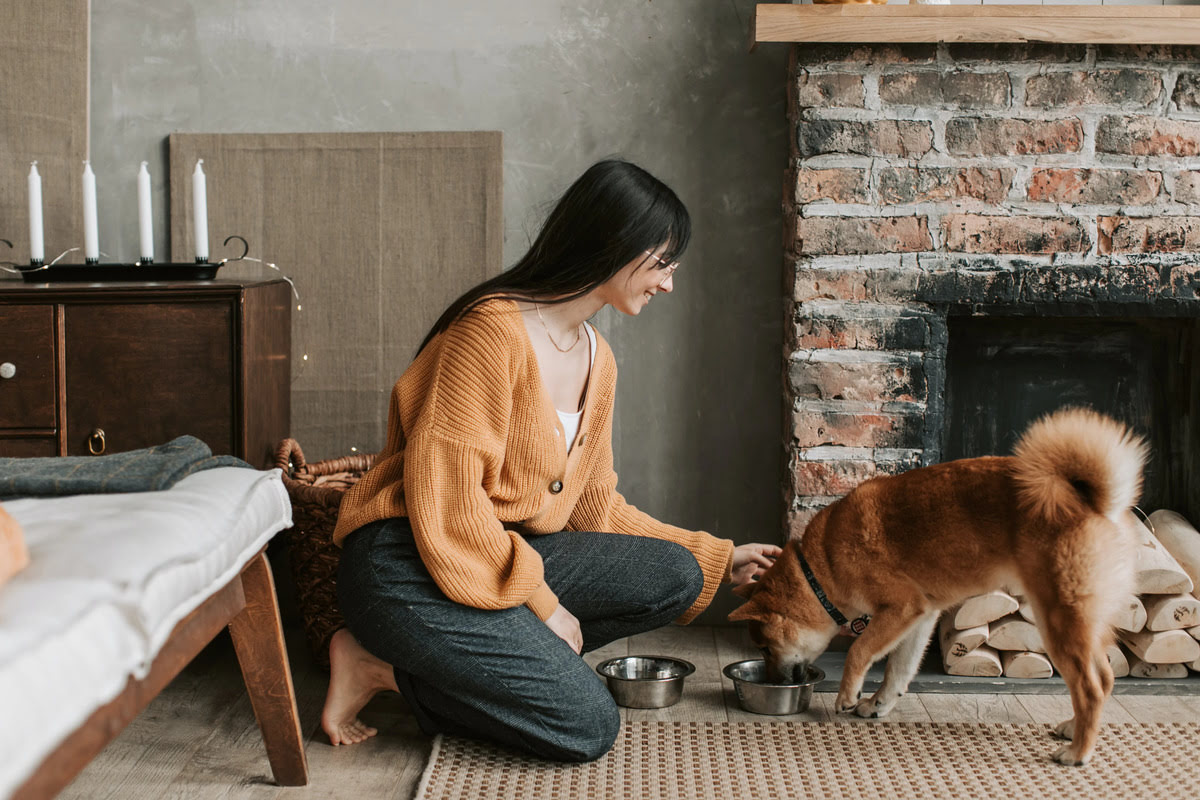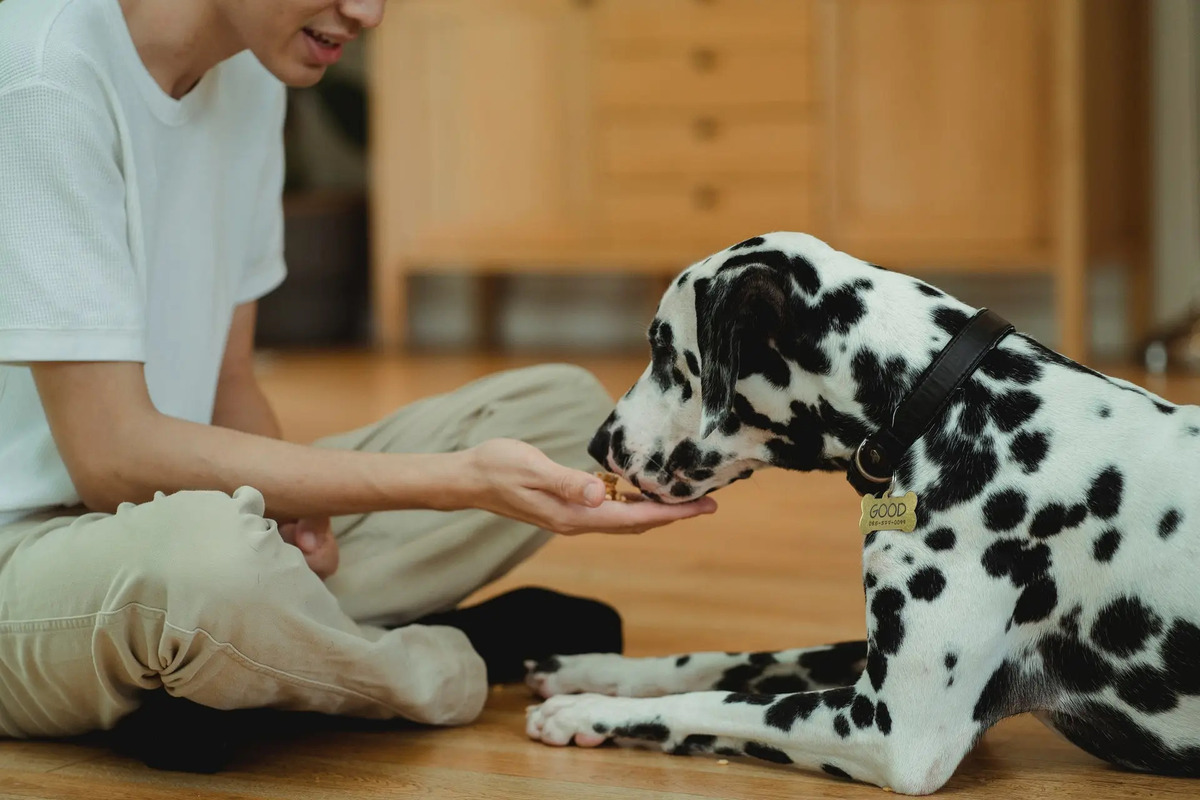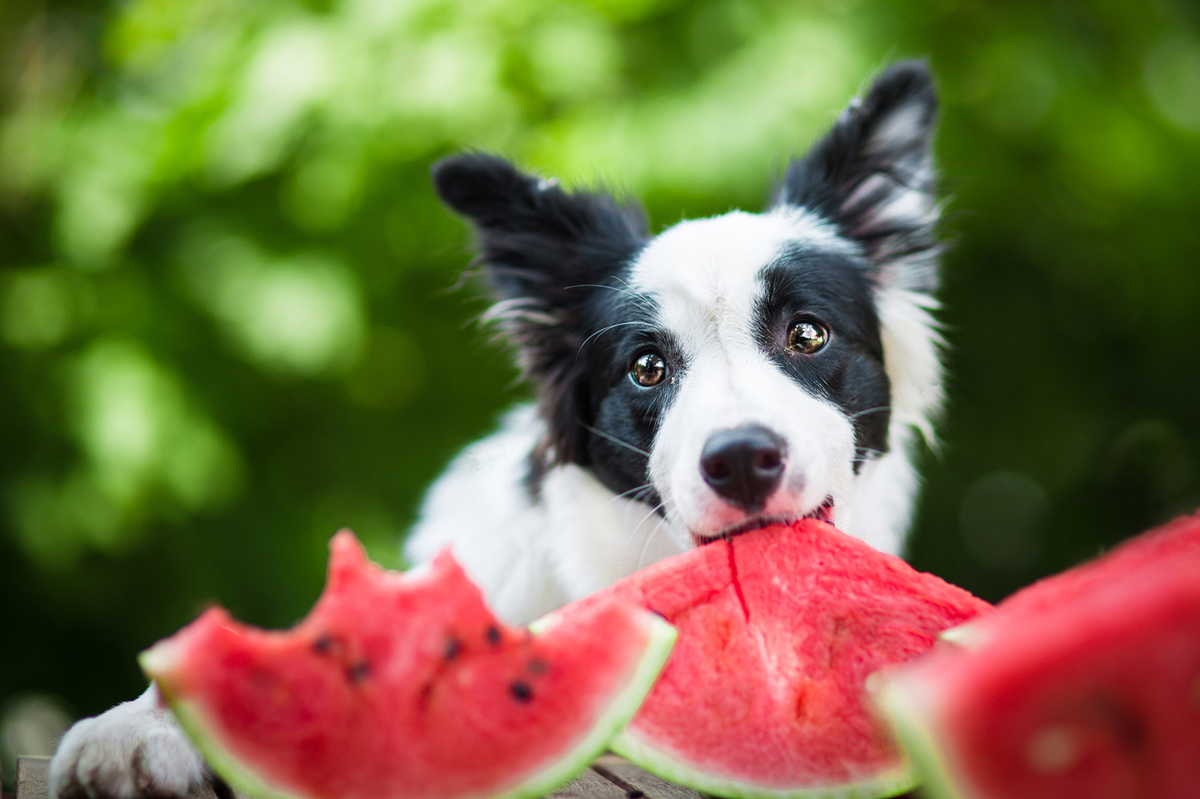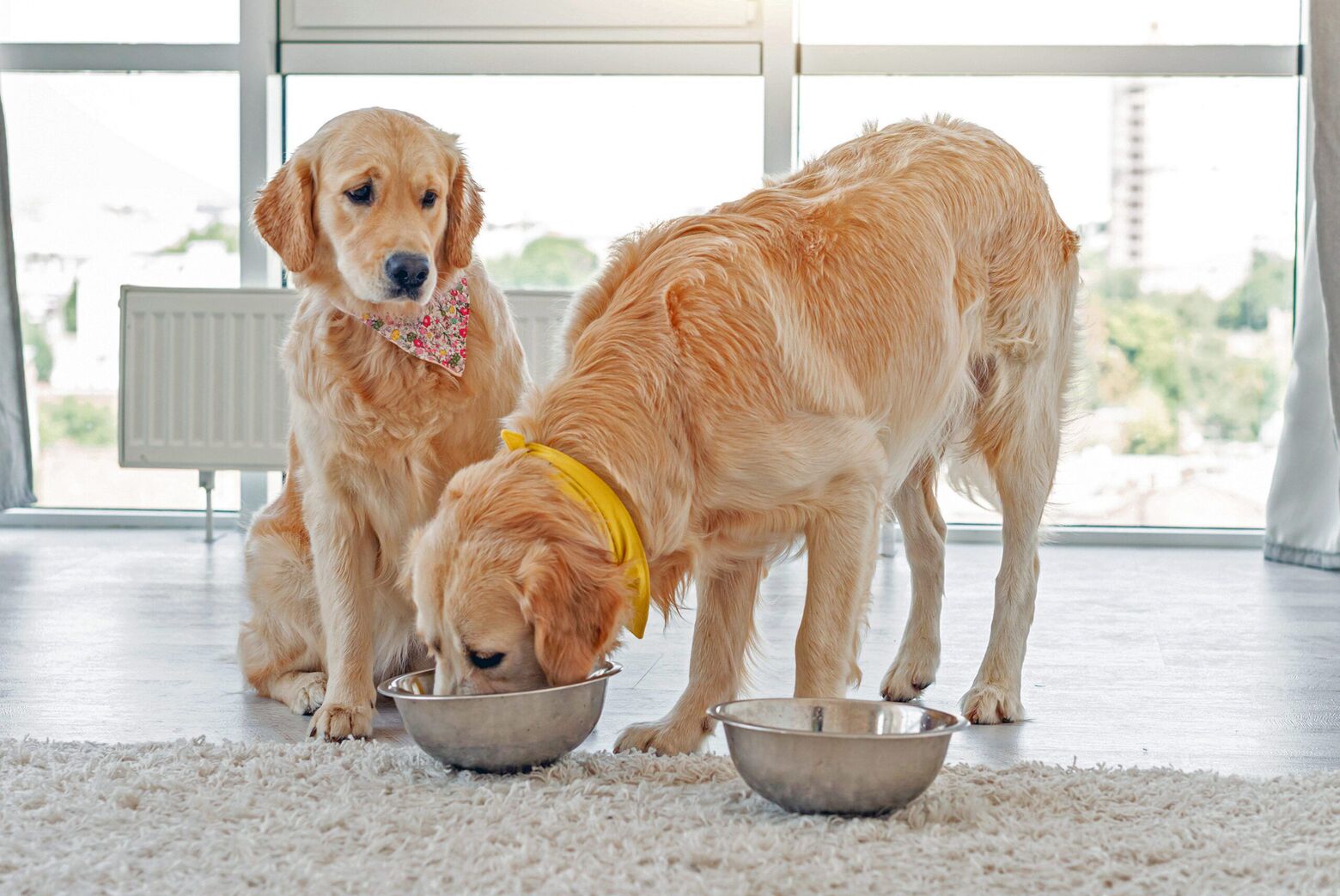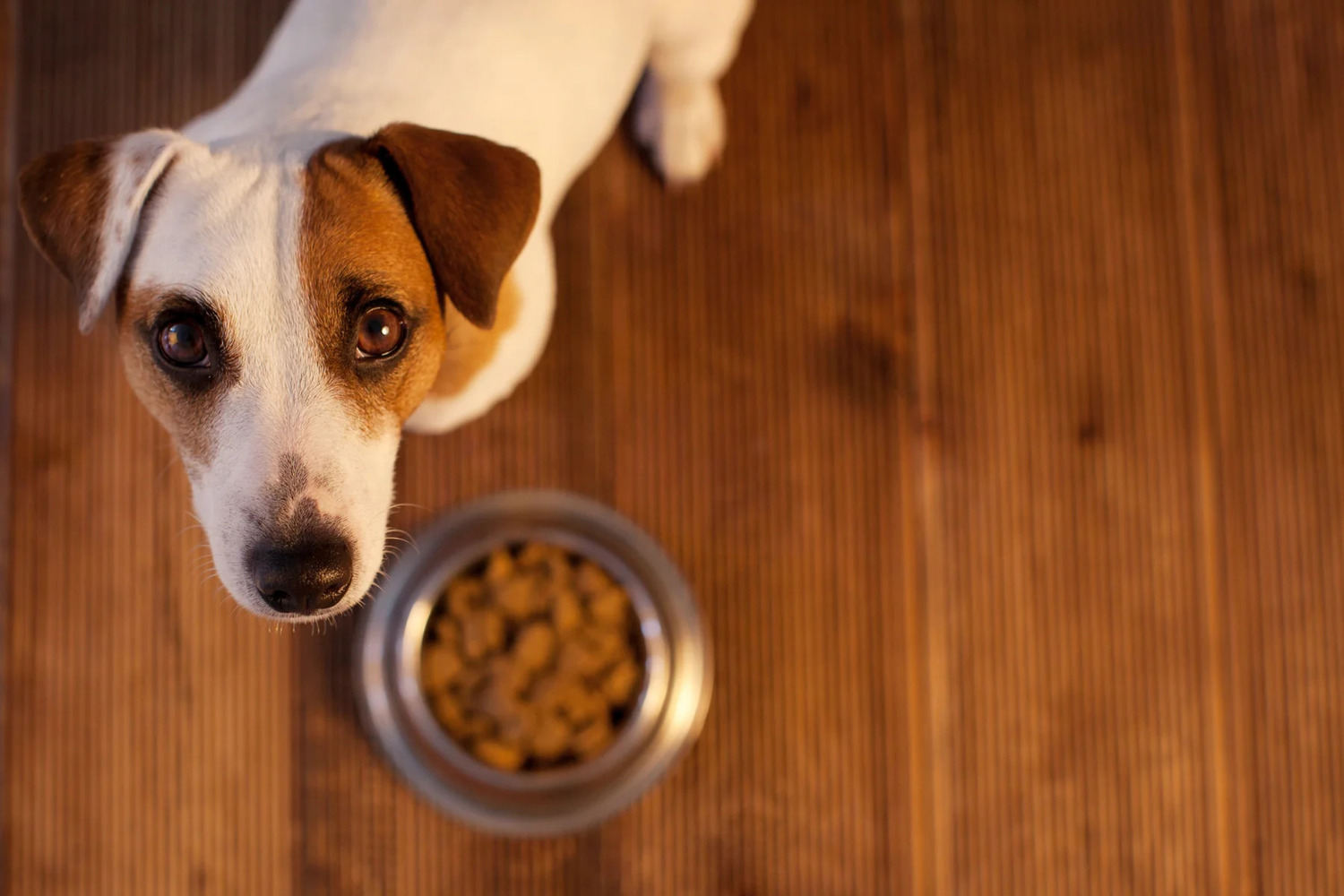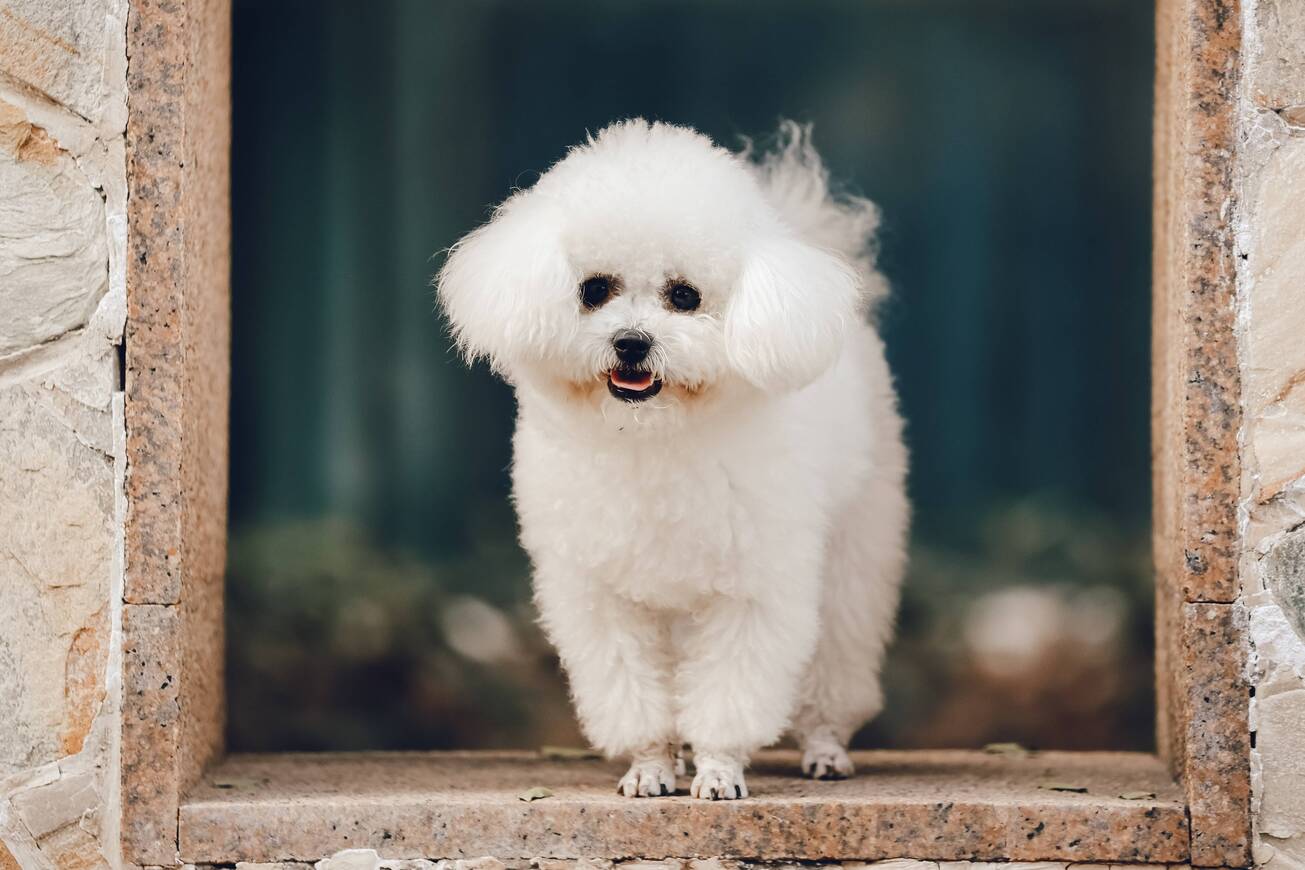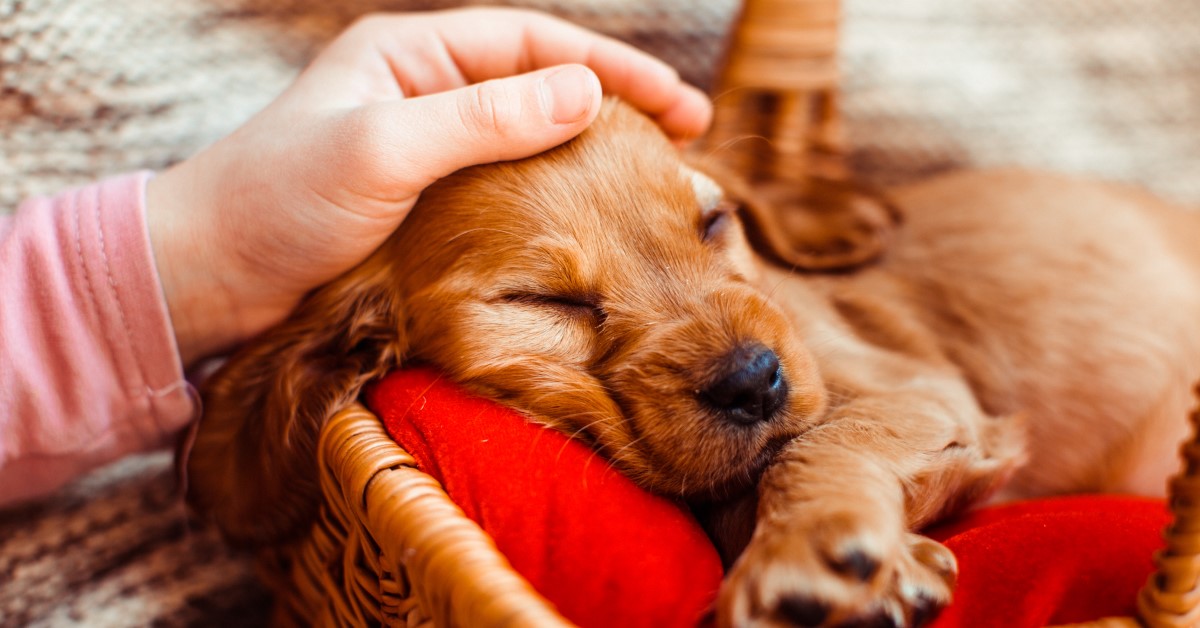Home>Health & Wellness>Common Health Issues>Eye and Ear Health>What Should Be Done About A Dog With Eye Lids That Turn In?
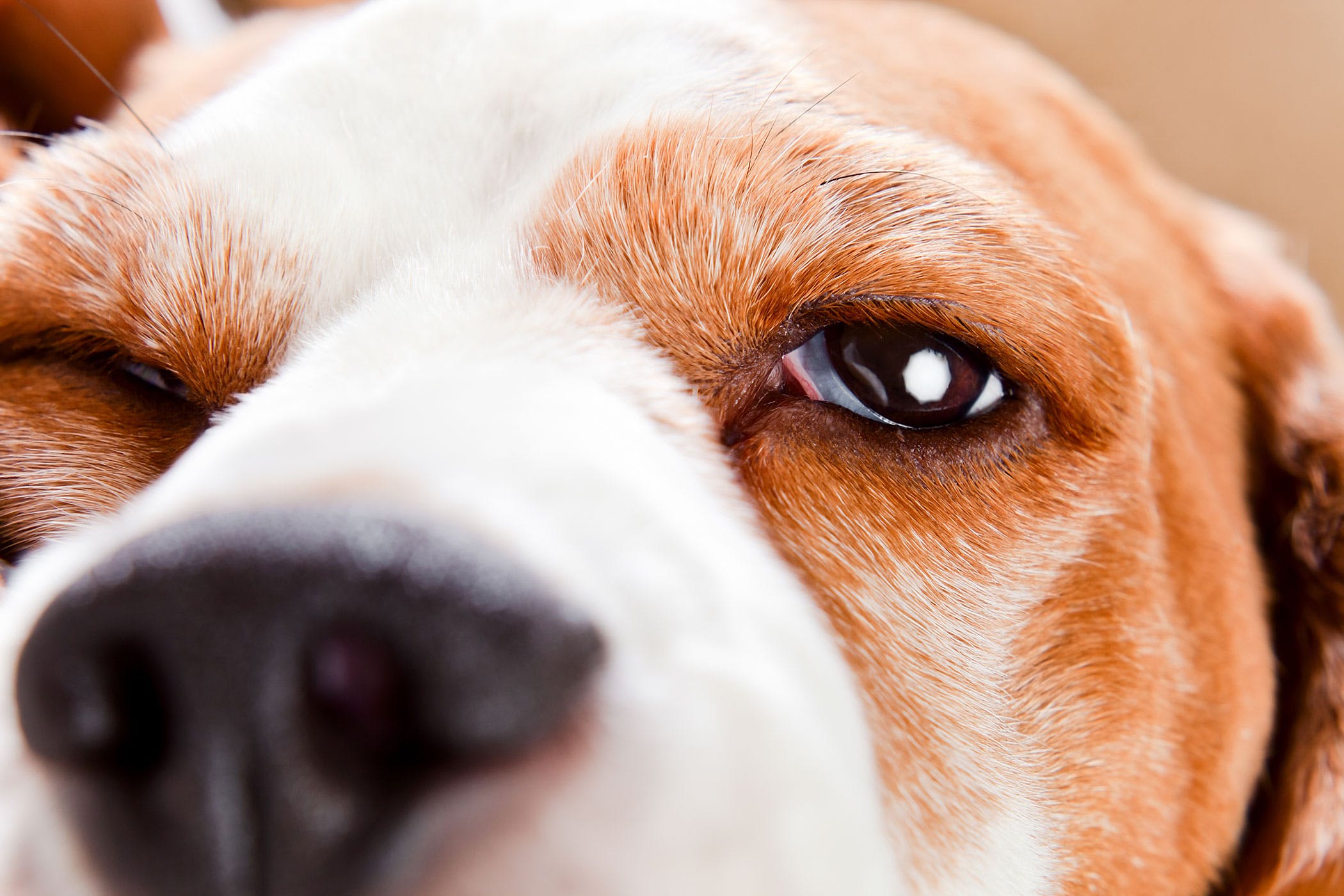

Eye and Ear Health
What Should Be Done About A Dog With Eye Lids That Turn In?
Published: February 11, 2024
If your dog has eye lids that turn in, it's important to address this issue promptly to maintain their eye and ear health. Learn what steps to take to ensure your dog's well-being.
(Many of the links in this article redirect to a specific reviewed product. Your purchase of these products through affiliate links helps to generate commission for Pawsomeoldies.com, at no extra cost. Learn more)
Table of Contents
Introduction
When it comes to our furry companions, their health and well-being are of utmost importance. One common issue that can affect dogs is inverted eyelids, also known as entropion. This condition occurs when a dog's eyelids roll inward, causing the lashes and hair to rub against the cornea, leading to discomfort and potential eye damage. As responsible pet owners, it's crucial to understand the implications of this condition and the necessary steps to ensure our canine friends receive the care they need.
In the following sections, we will delve into the intricacies of entropion in dogs, exploring the potential health risks and discomfort it can cause. We will also discuss the available treatment options and preventative measures to provide comprehensive care for dogs with inverted eyelids. By gaining a deeper understanding of this condition and its implications, we can take proactive steps to safeguard our furry friends' eye health and overall well-being.
Read more: What To Do About Cherry Eye In Dogs
Understanding the condition of inverted eyelids in dogs
Entropion, commonly referred to as inverted eyelids, is a condition that can affect dogs of various breeds and ages. It occurs when the dog's eyelids roll inward, causing the hair and lashes to come into contact with the surface of the eye. This inward rolling can lead to irritation, discomfort, and potential damage to the cornea, the transparent outer layer of the eye.
The onset of entropion can be attributed to a combination of genetic predisposition and anatomical factors. Certain dog breeds, such as the Shar-Pei, Chow Chow, and Labrador Retriever, are more prone to developing this condition due to their facial structure and genetic makeup. Additionally, puppies with excessive skin folds around the face may also be at a higher risk of developing entropion.
One of the primary indicators of entropion in dogs is excessive tearing or ocular discharge, as the constant friction between the eyelashes and the cornea can lead to irritation and inflammation. Furthermore, affected dogs may display signs of discomfort, such as squinting, rubbing their eyes, or avoiding bright lights. It's essential for pet owners to be vigilant and recognize these symptoms, as early detection can significantly impact the dog's overall eye health and well-being.
In some cases, entropion may affect both the upper and lower eyelids, exacerbating the discomfort and potential damage to the eye. The severity of the condition can vary, ranging from mild irritation to more pronounced symptoms that require immediate attention from a veterinarian.
Understanding the nuances of entropion in dogs empowers pet owners to recognize the signs and symptoms, prompting timely intervention and treatment. By gaining insight into the underlying causes and manifestations of this condition, we can take proactive measures to ensure the optimal eye health and comfort of our beloved canine companions.
Potential health risks and discomfort for the dog
Entropion in dogs poses significant health risks and discomfort, impacting their overall well-being. The inward rolling of the eyelids leads to a range of potential complications and discomfort for the affected canine companions.
Corneal Damage:
The constant friction between the inverted eyelids and the cornea can result in corneal abrasions and ulcers. The delicate surface of the cornea is susceptible to damage when exposed to the constant irritation caused by the lashes and hair. Corneal ulcers can lead to pain, inflammation, and impaired vision for the dog, necessitating prompt intervention to prevent further complications.
Ocular Infections:
The compromised integrity of the eye due to entropion increases the risk of ocular infections. The constant exposure to environmental debris and bacteria, coupled with the inability to effectively blink and lubricate the eye, creates an environment conducive to the development of infections. These infections can exacerbate the discomfort experienced by the dog and may require targeted treatment to alleviate the symptoms and prevent further progression.
Chronic Discomfort:
Dogs with entropion experience chronic discomfort stemming from the constant irritation and inflammation of the cornea. The sensation of foreign objects rubbing against the eye can lead to persistent discomfort, prompting the dog to exhibit signs of distress such as excessive blinking, squinting, or pawing at the affected eye. This discomfort can significantly impact the dog's quality of life, affecting their behavior and overall well-being.
Vision Impairment:
In severe cases of entropion, the dog's vision may be compromised due to the persistent damage to the cornea and surrounding structures. The impaired vision can hinder the dog's ability to navigate their surroundings, potentially leading to accidents and further injury. Addressing the underlying entropion is crucial in preserving the dog's visual acuity and ensuring their overall safety and comfort.
Emotional Distress:
The discomfort and pain associated with entropion can also lead to emotional distress for the affected dog. The inability to find relief from the persistent irritation and discomfort can impact the dog's temperament and overall demeanor. Addressing the underlying entropion and alleviating the associated discomfort is essential in promoting the dog's emotional well-being and quality of life.
Understanding the potential health risks and discomfort faced by dogs with entropion underscores the importance of proactive intervention and comprehensive care. By recognizing these implications, pet owners can prioritize the well-being of their canine companions and take the necessary steps to address and mitigate the effects of entropion on their beloved pets.
Treatment options for dogs with inverted eyelids
Addressing entropion in dogs requires a tailored approach to alleviate discomfort, mitigate potential complications, and restore optimal eye health. Veterinary intervention is paramount in devising an effective treatment plan that addresses the specific needs of the affected dog. The treatment options for dogs with inverted eyelids encompass a range of strategies aimed at correcting the underlying condition and promoting the dog's overall well-being.
Ophthalmic Ointments and Lubricants:
In mild cases of entropion, ophthalmic ointments and lubricating eye drops may be prescribed to alleviate irritation and provide temporary relief. These products help lubricate the cornea, reducing friction and discomfort caused by the inverted eyelids. While they offer symptomatic relief, they do not address the underlying cause of entropion and are typically used as a supportive measure in conjunction with other treatment modalities.
Surgical Correction:
Surgical intervention is often the primary approach for addressing moderate to severe cases of entropion in dogs. The surgical procedure aims to correct the positioning of the eyelids, preventing the inward rolling and subsequent irritation of the cornea. Depending on the specific anatomical factors and severity of the condition, various surgical techniques may be employed, including eyelid tacking, wedge resection, or full-thickness eyelid reconstruction. These procedures are performed under general anesthesia and require meticulous precision to achieve optimal outcomes.
Breed-Specific Considerations:
Certain dog breeds, such as the Shar-Pei and Chow Chow, may require breed-specific surgical techniques to address entropion effectively. The unique anatomical characteristics of these breeds necessitate specialized approaches to achieve long-term correction and minimize the risk of recurrence. Veterinarians with expertise in breed-specific entropion are equipped to tailor the surgical intervention to the distinct requirements of each breed, ensuring comprehensive and targeted care for affected dogs.
Post-Operative Care and Monitoring:
Following surgical correction, diligent post-operative care and monitoring are essential to facilitate the dog's recovery and ensure the success of the procedure. This includes administering prescribed medications, such as antibiotics and anti-inflammatories, to prevent infection and reduce post-operative inflammation. Additionally, regular follow-up appointments with the veterinarian allow for close monitoring of the surgical site, assessment of healing progress, and prompt identification of any potential complications.
Read more: What To Do About A Dog With Wheat Allergies?
Long-Term Management:
After undergoing surgical correction for entropion, dogs require long-term management to maintain optimal eye health and prevent recurrence. This may involve ongoing ophthalmic evaluations to monitor the eyelid positioning and assess for any signs of relapse. Additionally, adhering to a proactive approach to overall eye care, including regular eye examinations and preventive measures, is crucial in safeguarding the dog's ocular well-being in the long term.
By leveraging these treatment options and implementing a comprehensive care plan, pet owners can effectively address entropion in their canine companions, alleviate discomfort, and promote optimal eye health. Collaborating closely with a trusted veterinarian ensures that the chosen treatment modalities are tailored to the specific needs of the affected dog, ultimately fostering a positive outcome and enhancing the dog's overall quality of life.
Preventative measures and long-term care for dogs with inverted eyelids
Preventative measures and long-term care play a pivotal role in managing entropion in dogs, ensuring sustained eye health and minimizing the risk of recurrence. By implementing proactive strategies and adhering to a structured care regimen, pet owners can effectively support their canine companions with inverted eyelids, promoting their overall well-being and comfort.
Environmental Modifications:
Creating an environment that minimizes potential irritants and hazards for dogs with entropion is essential. This includes safeguarding the living space to prevent exposure to dust, pollen, and other airborne particles that can exacerbate ocular irritation. Additionally, ensuring a clean and debris-free living area reduces the risk of ocular infections and discomfort for the affected dog.
Regular Eye Examinations:
Scheduled eye examinations by a qualified veterinarian are integral to long-term care for dogs with inverted eyelids. These evaluations allow for the early detection of any changes in the eyelid positioning, ocular health, or signs of potential complications. By proactively monitoring the dog's eye health, pet owners can address any emerging concerns promptly, facilitating timely intervention and targeted management.
Ongoing Veterinary Consultations:
Maintaining regular consultations with a trusted veterinarian is crucial in overseeing the long-term care of dogs with entropion. These consultations provide an opportunity to assess the effectiveness of the chosen treatment modalities, monitor the dog's overall eye health, and address any emerging issues. Open communication with the veterinarian fosters a collaborative approach to the dog's care, ensuring that any evolving needs are promptly addressed.
Eye Protection and Supportive Measures:
In certain cases, protective measures such as specialized goggles or eye shields may be recommended to safeguard the affected eye and minimize exposure to external irritants. These supportive measures serve to alleviate discomfort and reduce the risk of further ocular irritation, particularly during outdoor activities or in environments where potential hazards are present.
Nutritional Considerations:
Optimal nutrition plays a significant role in supporting the overall health and well-being of dogs with entropion. Providing a balanced diet rich in essential nutrients, including vitamins A and E, supports ocular health and may contribute to the dog's overall resilience. Consultation with a veterinarian can aid in formulating a nutritionally balanced diet tailored to the specific needs of the affected dog.
Diligent Observation and Prompt Intervention:
Pet owners should remain vigilant and observant of any changes in their dog's behavior, ocular discharge, or signs of discomfort. Prompt intervention in response to emerging symptoms or concerns is crucial in preventing potential complications and ensuring the dog's ongoing comfort and well-being.
By integrating these preventative measures and long-term care practices into the daily routine, pet owners can provide comprehensive support for their canine companions with inverted eyelids. This proactive approach not only mitigates the risk of ocular complications but also fosters a nurturing and supportive environment that prioritizes the dog's eye health and overall quality of life.
Conclusion and final considerations
In caring for dogs with inverted eyelids, it is imperative for pet owners to prioritize proactive measures and comprehensive support to ensure the optimal eye health and overall well-being of their beloved companions. By gaining a deeper understanding of entropion and its implications, pet owners can effectively navigate the complexities of this condition, empowering them to take informed and proactive steps in addressing the specific needs of their canine friends.
The journey of managing entropion in dogs encompasses a multifaceted approach, encompassing early recognition of symptoms, prompt veterinary intervention, tailored treatment modalities, and ongoing long-term care. Through collaborative efforts with trusted veterinarians, pet owners can devise personalized care plans that address the unique requirements of their dogs, fostering a positive outcome and enhancing the dog's quality of life.
As we navigate the complexities of entropion in dogs, it is essential to underscore the significance of early detection and intervention. Recognizing the subtle signs of discomfort and ocular irritation enables pet owners to seek timely veterinary evaluation, facilitating prompt diagnosis and targeted management. This proactive approach is instrumental in mitigating potential complications and minimizing the impact of entropion on the dog's overall well-being.
Furthermore, the implementation of preventative measures and long-term care practices serves as a cornerstone in sustaining the dog's ocular health and minimizing the risk of recurrence. By creating a supportive environment, prioritizing regular eye examinations, and adhering to ongoing veterinary consultations, pet owners can effectively safeguard their canine companions with inverted eyelids, promoting sustained comfort and well-being.
In the realm of entropion management, the commitment to diligent observation, prompt intervention, and collaborative engagement with veterinary professionals is paramount. By fostering open communication and a proactive mindset, pet owners can navigate the complexities of entropion with confidence, ensuring that their canine companions receive the comprehensive care and support they deserve.
Ultimately, the journey of caring for dogs with inverted eyelids is a testament to the unwavering bond between pet owners and their beloved companions. Through unwavering dedication, informed decision-making, and a nurturing environment, pet owners can champion the well-being of their dogs, fostering a life enriched by comfort, vitality, and the joy of shared experiences.
In the realm of entropion management, the commitment to diligent observation, prompt intervention, and collaborative engagement with veterinary professionals is paramount. By fostering open communication and a proactive mindset, pet owners can navigate the complexities of entropion with confidence, ensuring that their canine companions receive the comprehensive care and support they deserve.
Ultimately, the journey of caring for dogs with inverted eyelids is a testament to the unwavering bond between pet owners and their beloved companions. Through unwavering dedication, informed decision-making, and a nurturing environment, pet owners can champion the well-being of their dogs, fostering a life enriched by comfort, vitality, and the joy of shared experiences.
